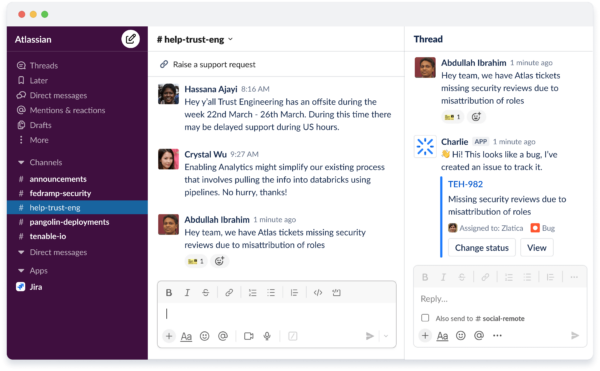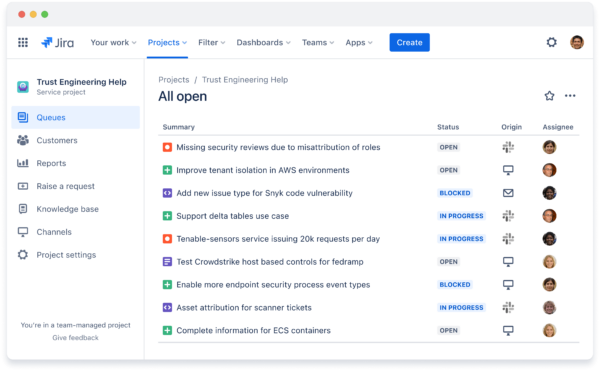How Atlassian engineering teams keep their backlog clean
Learn how real Atlassians use Atlassian products to unleash the potential of their teams
At Atlassian, we have two teams of software engineers that help our security team. About a quarter of their workload comes from security requests, such as changing code or updating automation. Kat Kelsch is a software engineering manager and has set up a structured process using Jira Service Management to manage the requests.
- Set up a request form with custom fields. Using a Jira Service Management template, Kat created a request form for the security team and customised the fields to suit her way of working. The questions are focused on the problem, rather than an already-formed solution. And the questions in the form make it easy to assign the request to the right people.
“One of the biggest misconceptions is that it’ll be more work than it’s worth. I reduced a significant amount of communication and I haven’t touched the form in six months, and it’s still working.”
Learn more about request forms

- Automate requests from a dedicated Slack or Teams channel. Using drag-and-drop automation in Jira Service Management, Kat linked up a Slack channel to a service project. Slack messages automatically turn into service issues. Comments on the ticket show up on the ticket and on the Slack thread. Learn more about chat and Jira Service Management

- Automatically turn all requests into issues. From the form or chat channels, all requests automatically create an issue in her team’s service project. The issues are assigned to different product managers and pre-populated with the right info and context from Slack or the form. The security team member gets an email with their issue number so they can view the details and status, leave any notes, and reply to comments.
“Context switching is not completely eliminated, but it’s reduced significantly.”

- Connect to Jira Software. The product manager can keep things in Jira Service Management or simply turn the issue into a Jira Software issue, with the same assignee, summary, and description.
“Being able to seamlessly move requests from your service desk into a into whatever project you need is super helpful.”
- Use report templates to monitor the work. The teams can use out-of-the-box reports in Jira Service Management to keep tabs on KPIs like CSAT and SLAs. And because Jira Software and Jira Service Management are both built on the same Atlassian platform it’s easy to share data and create an end-to-end view of the whole process.
